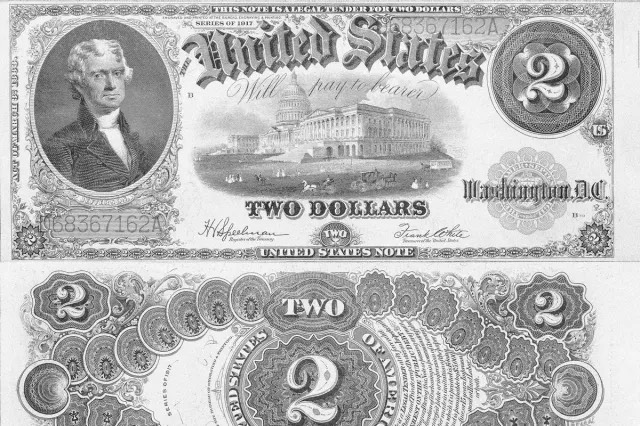
Credit: Art-Studio/ Alamy Stock Photo
Did you know the $2 bill has been a part of American currency since 1776 — the same year the Declaration of Independence was signed? That’s right! While most people rarely see one in circulation today, this little green oddity has a history as bold and rebellious as the Founding Fathers themselves.
Thomas Jefferson made his debut on the $2 bill in 1869, replacing the original portrait of Alexander Hamilton. The back of the bill? It features John Trumbull’s famous painting of the signing of the Declaration of Independence — which, fun fact, doesn’t actually show the signing but rather the presentation of the draft. (Artistic license, anyone?)
During the Great Depression, folks started hoarding the $2 bill, convinced it was unlucky or associated with gambling and bribes — especially in the racetrack world. By the time the ’70s rolled around, people practically treated them like rare artifacts. The Treasury tried to revive the note in 1976 for America’s bicentennial, but it never quite caught on.
Another twist: Many people think the $2 bill is no longer printed. Not true! The Bureau of Engraving and Printing still rolls them out — just not as frequently as the more popular denominations. That’s why banks often don’t stock them, and why finding one feels like uncovering buried treasure.
And here’s something quirky: there’s a whole subculture of $2 bill lovers. Some people collect them, while others spend them on purpose to challenge businesses to accept them — or just to see the surprise on cashiers’ faces.
So the next time someone hands you a $2 bill, don’t tuck it away like a relic. Take a second to appreciate the history it carries — and maybe even pass it on. You’ll be holding a little piece of America’s past, one rare transaction at a time.






More Stories
👓 A Clearer View: How We Dealt With Poor Vision Before Eyeglasses